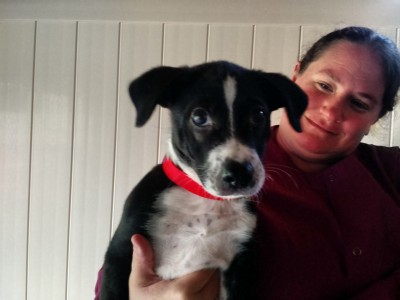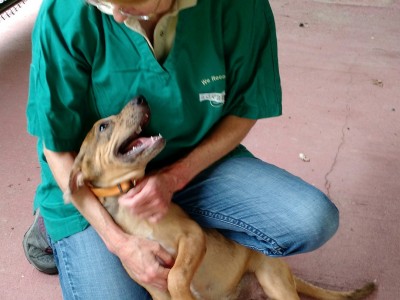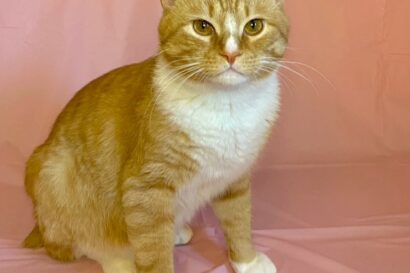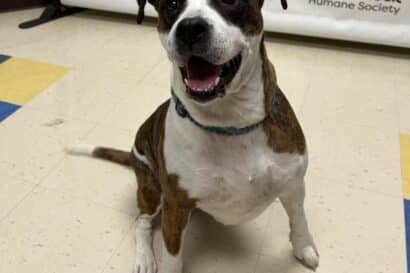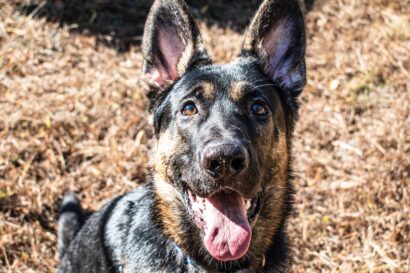
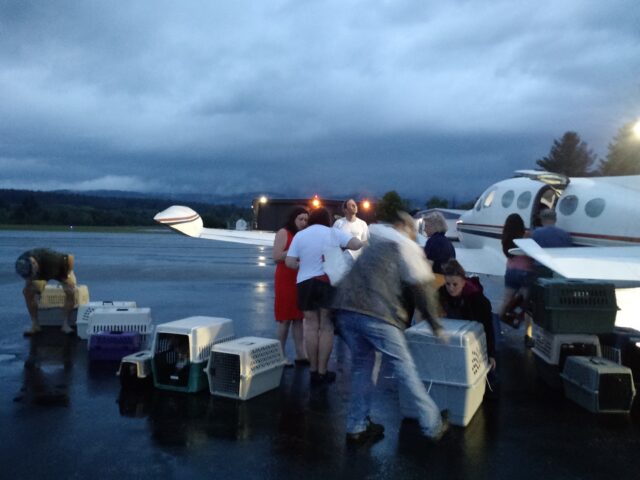
On a recent evening, animal welfare workers from around New England gathered at tiny Keene Dillant-Hopkins airport in Swanzey, NH. Raging thunderstorms had plagued the area all day. They had driven through the stormy weather; now they worried the flight might be delayed. N620CA, the plane they waited for, carried precious cargo. Forty dogs were aboard the tiny twin-engine Cesna. Its pressurized cabin was loaded from floor to ceiling with crates of dogs going for the ride of their life. They were flying away from a region where pet overpopulation is the norm, and sweet, healthy, but unwanted dogs die daily.
In New England, where spay/neuter has become a cultural norm, shelters routinely are able to place 90% and higher of their animals. Down south, where pet population control is less widely practiced, shelters more typically struggle to ensure a “live release rate” of between 40-60 percent. Turn that statistic to the mirror and face a grim truth—almost half the animals taken in to shelters down south are killed because there are too many dogs and cats.
Tonight’s flight coordinates a multiplicity of animal welfare groups. At the sending end, Operation Pets Alive (OPA) works with shelters throughout Montgomery County, Texas, to identify and take charge of those at-risk dogs who present the best profile as adoption candidates. Cloud Nine Rescue Flights, a non-profit dedicated to providing safe, fast, and cost-effective air transport for shelter/rescue animals, operates the plane. On the receiving end this evening are Monadnock Humane Society, Upper Valley Humane Society, Dakin Humane Society, and PAWS New England.

“Our first responsibility is animals from our community, of course,” says Emily Kerylow, Director of Shelter Operations at Monadnock Humane Society. The tall brunette with an easy smile speaks quickly and with authority. “Often, those animals need a lot of care before they are ready to go up for adoption.” MHS began working with OPA a number of years ago. “They can meet our standards of providing animals with full medical records, so we know about the dogs we are receiving. The dogs OPA sends to us typically are adoptable in a week or so after they arrive.” The OPA dogs quickly go on to become treasured family members.
A sense of urgency is always present when you enter the animal welfare world. The lingo mimics that used by the military: mission, operations, outcomes, objectives. Time is critical; dogs and cats are sentient and short-lived. Certain time periods in puppies’ lives are crucial for developing friendly and resilient companions; same with kittens. The clock is always ticking. Individual lives matter. Yet, behind each individual animal is a sea of individuals, all pressingly in need of care and caring. Resources are limited, very limited. People who work in animal welfare feel the pressure all the time.
“No one in the northeast today really understands what’s going on down here unless you’ve seen it,” says Marcia Piotter, President of Operations Pets Alive. A veteran of almost thirty years in animal welfare work, her voice is gravelly with a slight Texas twang as she struggles to find a way to explain. “I just was…you go to a shelter and…for instance, the intake pens…there’s a mother with eleven newborn puppies in one corner, a mother with seven older puppies in another corner and a crate with a bunch of five month old cattle dog puppies nearly bald from mange. That’s just a daily intake. They’ve just been dropped off. It’s awful.”
Over the years, OPA has worked the kinks out of its transport system. They’ve built

relationships with a number of shelters in the Northeast who dependably welcome dogs on a predictable schedule. That allows Marcia and her team to enter Montgomery County shelters knowing just how many dogs they can bring out. As they walk through the adoption rooms, they have a checklist of qualities that allows them to make an initial cut. Once they’ve identified the possibles, they begin assessing individuals. The ones who demonstrate a likeable and resilient character are taken by OPA and put into two-week foster homes while OPA provides basic medical care such as vaccinations and spay/neuter. The volunteer foster families work with these dogs to get them ready for their forever homes. “We try to give the Northeast shelters exactly what they are looking for,” says Piotter. “In exchange, we ask them to put fifty dollars per dog into our local spay/neuter program so we can make every transport a double-whammy on our pet population: one gone into a home and one more who can’t have puppies.” For some shelters, this feels too much like buying dogs, so the contribution is voluntary, and not a condition for receiving dogs from OPA.
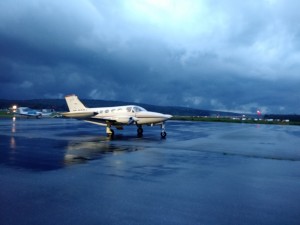
Tonight’s flight is using Cloud Nine Rescue Flight’s new bird—a used Cessna 414 that has double the capacity of their original plane. Since 2009, when Ted DuPuis launched his non-profit, Cloud Nine’s moved over 2000 dogs. However, the new plane needs some vital work to keep it flying. Cloud Nine is actively seeking donations for a $27,000 replacement of propellers. “I do it for the dogs,” Ted DuPuis says of the operation he runs. “I don’t take a salary. I never will. The new plane will let us do more.”
Says OPA’s Piotter of Cloud Nine, “we like using them because we know only our dogs will be on the flight. Not saying that others aren’t doing their medical work, but we like knowing our dogs aren’t exposed to any other dogs in transit.” (OPA uses truck transports as well, but trucks take three days to make the journey the plane can do in six hours.)
Monadnock Humane Society’s Canine Coordinator, Beth Doyle arrived at the airport in
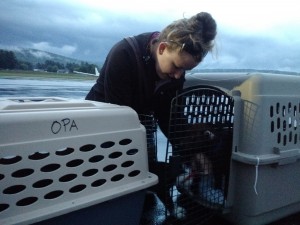
her own truck rather than using her organization’s van, because its air conditioning will make it easier to keep the dogs comfortable. For Doyle, this is the tail end of a work day that started at 6 a.m. In the seven years she’s been at MHS she’s seen a steady decrease in the numbers of owner-surrenders of pregnant female dogs, Overall, the number of dogs coming in to MHS from its service area has decreased. “Which leaves us with the capacity to bring in some easy-to-adopt animals,” she says.
Wearing a green tee shirt that bears an Upper Valley Humane Society logo, Amy Woodman, UVHS’ Shelter Director, joins the conversation as we await the flight. “We’ve seen a decrease in owner-surrender and an increase in return to owner at UVHS,” she says. “Our first responsibility is to care for our local animals, but we have empty kennels, which is a good thing. When we have the space, why not bring in some dogs who might otherwise not make it?” Woodman says.
At last, the runway lights blaze on, and a few minutes later, a sleek twin-engine plane taxis to a stop against a sky full of sculpted grey clouds in the gathering dusk. The airport is so rural there are no gates: the pilot steps onto the tarmac, and we all head out to greet him, and begin the process of getting the dogs. Lifting a pile of folders from a compartment in the wing, Cloud Nine’s DePuis begins a role call—handing all-important paperwork to each organization’s representative. Finally, the crates begin to be handed off the plane, and we get a look at what we’re there for—sweet, wiggly, friendly puppies and dogs destined for long lives and soft beds.
